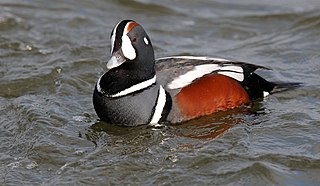
The sea ducks (Mergini) are a tribe of the duck subfamily of birds, the Anatinae. The taxonomy of this group is incomplete. Some authorities separate the group as a subfamily, while others remove some genera. Most species within the group spend their winters near coastal waters. Many species have developed specialized salt glands to allow them to tolerate salt water, but these are poorly developed in juveniles. Some of the species prefer riverine habitats. All but two of the 22 species in this group live in far northern latitudes.

The New Zealand merganser, also known as Auckland merganser or Auckland Islands merganser, was a typical merganser which is now extinct.

Stephens Island is at the northernmost tip of the Marlborough Sounds in the South Island of New Zealand. It lies two kilometres to the northeast of Cape Stephens, the northernmost point of D'Urville Island. The island is 1.5 square kilometres in size, and rises 283 metres (928 ft) high from the sea.

The biodiversity of New Zealand, a large island country located in the south-western Pacific Ocean, is varied and distinctive. The species of New Zealand accumulated over many millions of years as lineages evolved in the local circumstances. New Zealand's pre-human biodiversity exhibited high levels of species endemism, but has experienced episodes of biological turnover. Global extinction approximately 65 Ma resulted in the loss of fauna such as non-avian dinosaurs, pterosaurs and marine reptiles e.g. mosasaurs, elasmosaurs and plesiosaurs. The ancient fauna is not well known, but at least one species of terrestrial mammal existed in New Zealand around 19 Ma. For at least several million years before the arrival of human and commensal species, the islands had no terrestrial mammals except for bats and seals, the main component of the terrestrial fauna being insects and birds. As recently as the 14th century a component has been introduced by humans, including many terrestrial mammals.

The conservation status of a group of organisms indicates whether the group still exists and how likely the group is to become extinct in the near future. Many factors are taken into account when assessing conservation status: not simply the number of individuals remaining, but the overall increase or decrease in the population over time, breeding success rates, and known threats. Various systems of conservation status exist and are in use at international, multi-country, national and local levels as well as for consumer use.

Comitas is a genus of medium-sized sea snails, marine gastropod molluscs in the family Pseudomelatomidae.
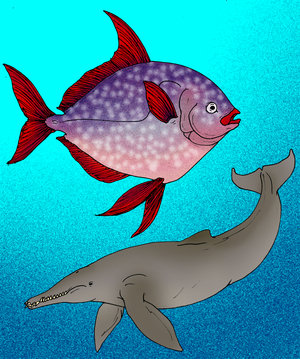
Waipatia is an extinct genus of whale from the late Oligocene (Chattian) of New Zealand.

Pseudomelatomidae is a family of predatory sea snails, marine gastropods included in the superfamily Conoidea and part of the Neogastropoda.

Patrick Marshall was a geologist who lived in New Zealand.
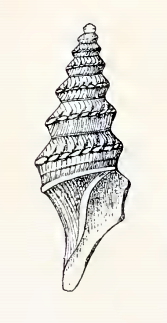
Paracomitas augusta is a species of sea snail, a marine gastropod mollusk in the family Pseudomelatomidae, the turrids and allies.
Gymnobela gypsata is a species of sea snail, a marine gastropod mollusk in the family Raphitomidae.

Paracomitas undosa is a species of sea snail, a marine gastropod mollusk in the family Pseudomelatomidae, the turrids and allies.

Paracomitas is a genus of sea snails, marine gastropod mollusks in the family Pseudomelatomidae.
Paracomitas haumuria is a species of sea snail, a marine gastropod mollusk in the family Pseudomelatomidae, the turrids and allies.
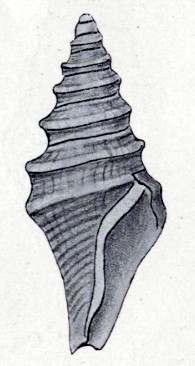
Paracomitas protransenna is an extinct species of sea snail, a marine gastropod mollusk in the family Pseudomelatomidae, the turrids and allies.
Paracomitas beui is an extinct species of sea snail, a marine gastropod mollusk in the family Pseudomelatomidae, the turrids and allies.
Paracomitas flemingi is an extinct species of sea snail, a marine gastropod mollusk in the family Pseudomelatomidae, the turrids and allies.
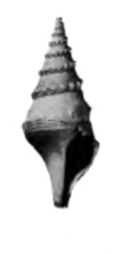
Paracomitas rodgersi is an extinct species of sea snail, a marine gastropod mollusk in the family Pseudomelatomidae, the turrids and allies.












